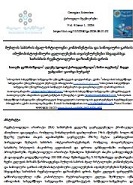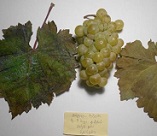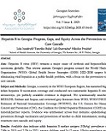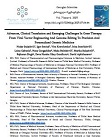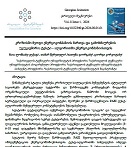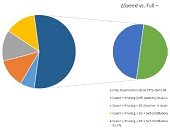Biochemical changes in agro-products coated with pseudoprotein food coating
This research [PHDF-23-3114] has been supported by the Shota Rustaveli National Science Foundation of Georgia (SRNSFG)
Downloads
Fruits and vegetables are perishable agricultural products, therefore extent of the shelf life of agroproducts is an actual challenge. This review presents biochemical changes that occurred during shelf life in covered agro-products with edible coating, in particular changes in parameters that determine their commodity properties, such as water-soluble dry matter (BRIX), titratable acidity, and crude cellulose. Edible coating is an alternative to traditional storage methods. Such films have been used since the last century. The prospects of edible coatings for sustainable food preservation have increased according to their use. Nowadays they are a current trend of organic products packaging. In recent years, preference has been given to the use of biodegradable, environmentally friendly materials in the form of food coatings. The interest in the development of biodegradable edible films is increasing every day. The aim of this study was to evaluate the effect of pseudoprotein applied as an edible coating. The research aims to determine the optimal storage conditions and, therefore obtain and apply different concentrations of pseudoprotein-based edible coating solutions for covering fruit and vegetable samples (apples, carrots). Products are stored at their suitable storage temperature. The results of the experiment emphasize the positive influence of pseudoproteins in extending the shelf life of agricultural products. Pseudoproteins have been mainly implemented in medicine as drug carriers and surgical implants, where they have shown high biocompatibility. Taking into account the potential of pseudoproteins to preserve agricultural products, it is possible to expand their scope and introduce them in the agriculture and food industry.
Downloads
Yahia, E.M.; García-Solís, P.; Celis, M.E. Contribution of Fruits and Vegetables to Human Nutrition and Health. In Post-Harvest Physiology and Biochemistry of Fruits and Vegetables; Woodhead Publishing: Amsterdam, The Netherlands, 2019; pp. 19–45.
Salihoglu, G.; Salihoglu, N.K.; Ucaroglu, S.; Banar, M. Food loss and waste management in Turkey. Bioresour. Technol. 2018, 248, 88–99.
Kumar, H.; Bhardwaj, K.; Sharma, R.; Nepovimova, E.; Kuˇca, K.; Dhanjal, D.S.; Verma, R.; Bhardwaj, P.; Sharma, S.; Kumar, D. Fruit and vegetable peels: Utilization of high-value horticultural waste in novel industrial applications. Molecules 2020, 25, 2812.
Singh, D. P.; Packirisamy, G.; Biopolymer-based edible coating for enhancing the shelf life of horticulture products, Food Chemistry: Molecular Sciences, V. 4, 2022, 100085.
Felicia, W. X. L.; Rovina, K.; Nur’Aqilah, M. N.; Vonnie, J. M.; Erna, K. H.; Misson, M.; Halid, N. F. A.; Recent Advancements of Polysaccharides to Enhance Quality and Delay Ripening of Fresh Produce: A Review. Polymers 2022, 14, 1341. https://doi.org/10.3390/polym14071341.
Senna, M.M. H.; Al-Shamrani, K. M.; Al-Arifi, A. S.; Edible Coating for Shelf-Life Extension of Fresh Banana Fruit Based on Gamma Irradiated Plasticized Poly(vinyl alcohol)/Carboxymethyl Cellulose/Tannin Composites. Materials Sciences and Applications, 5(6 ), 2014, 395-415. DOI:10.4236/msa.2014.56045
Katsarava, R., Puiggali, J. (2015). Leucine Based Polymers: Synthesis and Applications. Book Chapter in: Leucine: Biology, Consumption and Benefits. Biochemistry Research Trends, S.R. Newman, Ed., NOVA Sci. Publisher.
Katsarava, R., Kulikova, N., Puiggalí, J. (2016) Amino Acid Based Biodegradable Polymers – promising materials for the applications in regenerative medicine (Review). J. J. Regener. Med., 1(1): 012.
Katsarava, R., Gomurashvili, Z. Biodegradable Polymers Composed of Naturally Occurring α-Amino Acids. Handbook of Biodegradable Polymers - Isolation, Synthesis, Characterization and Applications, Lendlein, A. and Sisson, A., Eds., Wiley-VCH, Verlag GmbH & Co. KGaA. Ch. 5, 107-131 (2011).
Katsarava, R., Tugushi, D., Gomurashvili, ZD. Poly (ester urea) Polymers and Methods of Use. U.S. Patent No. 8,765,164 (2014).
Ghorani, B., & Tucker, N. (2015). Fundamentals of electrospinning as a novel delivery vehicle for bioactive compounds in food nanotechnology. Food Hydrocolloids, 51, 227–240. https://doi.org/10.1016/j.foodhyd.2015.05.024
Haonan, Wu., & Liandong Hu., Recent Advances of Proteins, Polysaccharides and Lipids-Based Edible Films/Coatings for Food Packaging Applications. Comprehensive Reviews in Food Science and Food Safety (2021),10.1111/1541-4337.12697, Volume 19, pp.29–45.
Jibladze, T., Palavandishvili, T., Katsarava, R., Preservation of agricultural products by polymer biomimetics: mathematical planning of the process. Collection of Scientific Works of the International Scientific Conference dedicated to the 90th anniversary of Givi Tsinstadze. Chemistry-achievements and perspectives, Georgian Technical University, Tbilisi, 2023, pp. 190-198.
Copyright (c) 2024 Georgian Scientists

This work is licensed under a Creative Commons Attribution-NonCommercial-NoDerivatives 4.0 International License.




























